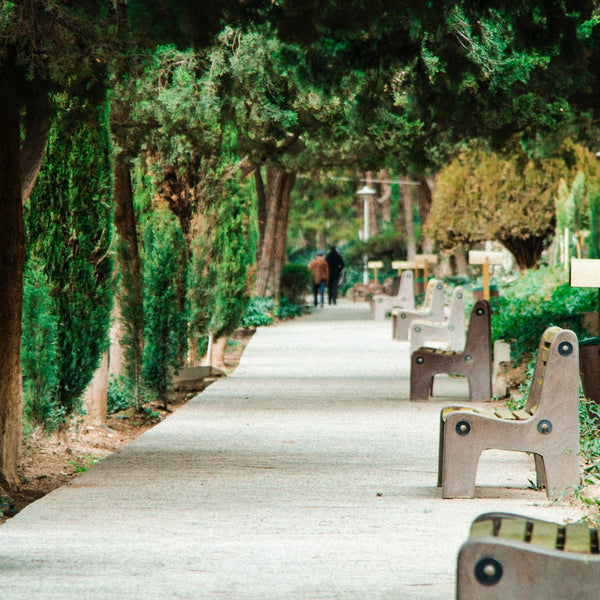The Nonprofit Reforesting The Ocean

High and low tides support diverse marine life. Currents regulate our weather patterns. Our oceans are an awe-inspiring natural system, and because they store 90 percent of global carbon dioxide, they’re critical in the fight against climate change.
Underneath the ocean’s blue surface are millions of thriving and unique ecosystems. Among them are coastal kelp forests, coral reefs, mangrove forests, seagrass meadows, and tidal marshes that make up blue carbon ecosystems. These ecological communities are known for their ability to sequester and store large amounts of the atmospheric carbon that causes climate change. In fact, they can sequester up to 20 times more carbon per acre than land forests.

Photo courtesy of SeaTrees by Sustainable Surf
That’s why the work of California-based nonprofit SeaTrees by Sustainable Surf is so vital. Through the power of collective action, they’re restoring ocean health by supporting the communities that plant, protect, and reforest coastal blue carbon ecosystems. Brentwood Home is proud to support SeaTrees by donating one percent of proceeds from our Crystal Cove line toward their essential conservation projects.
“We’re ultimately trying to build a movement of informed and active individuals. We hope people are inspired by Brentwood Home taking this action to help plant sea trees — that they’re invited to take that action themselves to become part of the climate solution.” —SeaTrees Co-Founder Michael Stewart.
Coastal blue carbon ecosystems are some of the most endangered on Earth. It’s estimated that 840,000 to 2.42 million acres are destroyed each year and up to 67 percent of global mangrove forests and at least 35 percent and 29 percent of tidal marshes and seagrass meadows, respectively, have been devastated.
This is where SeaTrees comes in. From the Ho’owaiwai Watershed in Maui, Hawaii, to the giant kelp forest in Monterey, California, the Southern Cardamom Watershed in Cambodia, and the mangrove forests in the Laguna San Ignacio in Baja, Mexico, SeaTrees and its partners are rehabilitating and reviving coastal blue carbon ecosystems in all corners of the world.
In San Francisco, California, where Stewart lives, 90 to 95 percent of the area’s historical kelp forests have been lost. “It’s just a shocking number,” he says. “We’ve lost almost all of it, all that habitat, all the fisheries that depend on it — like red urchin and abalone — all the habitat for marine life, fish, seals, whales.”

Photo courtesy of SeaTrees by Sustainable Surf
Read more: Is There Anything Kelp Forests Can’t Do?
The reason is simple: a climate change-related marine heatwave created the perfect conditions for a deadly virus that affected starfish living in San Francisco’s coastal kelp forests. As a result, starfish — the last remaining defense against encroaching purple sea urchins and a critical piece of the kelp forest ecosystem — were wiped out. Once this happened, the purple sea urchins took over, destroying the kelp forests in a matter of years.
“In California right now, it doesn’t do any good for us to try to grow giant kelp. We have to cull the urchins back to their correct density so the giant kelp can come back on its own,” says Stewart. “So we try to find those areas with healthy forest sea banks and systematically put out sea urchins and create the conditions for the ecosystem to come back.”
Meanwhile, in Laguna San Ignacio in Baja, Mexico — the world’s last undeveloped California gray whale breeding lagoon — sea level rise caused by climate change and intensified currents in estuaries are threatening the fragile red mangrove ecosystems living there. Located in the El Vizcaíno Biosphere Reserve, a 6.2 million-acre natural protected area, the mangrove forests provide a protective barrier for the area’s coastal communities. They also serve as the backbone of the sustainable fishing economy in Baja, which depends on the underwater nursery and feeding grounds to support the local fisheries.
To help rebuild the habitat, SeaTrees is planting 40,000 mangrove trees across 25 acres of mangrove forests in the area. However, this project wouldn’t be possible without their collaboration with 1% for the Planet member WILDCOAST and the community, including a local group of women known as Mujeres de El Dátil who were trained in 2019 on mangrove environmental services.

Photo courtesy of SeaTrees by Sustainable Surf
No matter where in the world SeaTrees has an ongoing project, they work in tandem with area nonprofits already invested in restoration efforts. With the help of the community, they determine ways to expand their impact and create permanent, long-term resilience for our incredible coastal blue ecosystems.
“It’s fascinating the different ways that restoration has to happen. We’ve learned one size does not fit all,” says Stewart. “Different methods work better in different places and you really have to work with the local community and listen to them. They are the genuine stewards of the landscape and have a much better idea of the conditions, how things grow, and the seasons of harvest for planting seeds.”
In 2021, SeaTrees achieved its first major milestone — one million sea trees planted and protected. Going forward, their goal is to invest in 100 blue carbon projects in threatened ecosystems by 2030, planting more sea trees along the way and helping to reverse the effects of climate change.
SeaTrees’ fundamental work relies on the support of brands like Brentwood Home and individuals alike. And they make it easy for anyone to take action through the purchase of SeaTrees Tokens. For every SeaTrees Token, one ton of CO2 is sequestered with carbon credits from Southern Cardamom REDD+ Project in Cambodia, four mangrove trees are planted in Indonesia, and one square foot of kelp is restored in Palos Verdes, California.

Photo courtesy of SeaTrees by Sustainable Surf
“The ocean makes up 71 percent of the planet. It’s so big that people forget about its importance. We have to create a new narrative that we live on an ocean planet, it gives us our climate, it gives us the majority of the oxygen we breathe, and it connects all of us,” says Stewart. “We need to understand that the ocean has to be a key part of the solution to climate change.”





